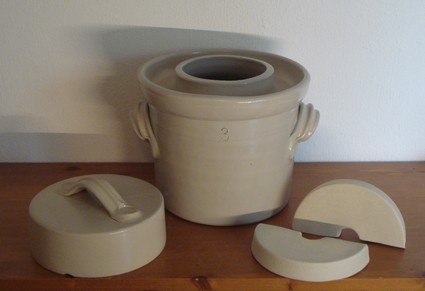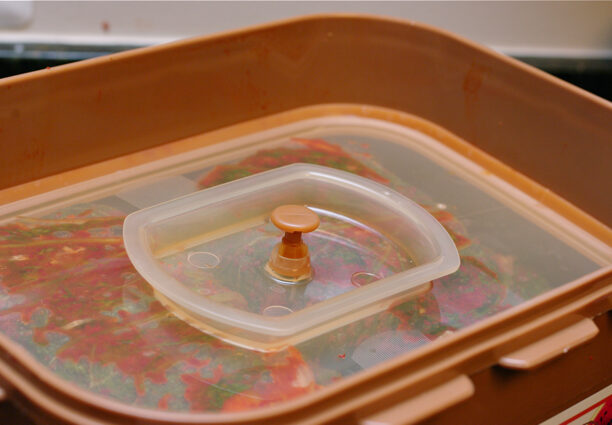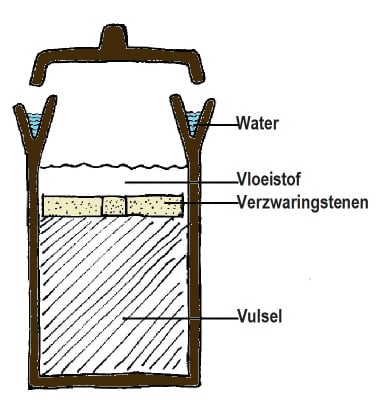yvonne84
Forum Replies Created
- AuthorPosts
yvonne84
ParticipantIt doesn’t matter if it’s stoneware or earthenware, but they have to be glazed well inside and out.
Maybe the reaction to this post will give you more information;
yvonne84
ParticipantYou used red cabbage?
I’m curious what that tastes like.
yvonne84
ParticipantWelcome Aashame:)
To answer your question;
” I wonder if there are any fat Koreans cause this stuff is making me lose weight.”
Of course there are some fat koreans, but according to the following link korea is the second leanest nation to provide data to the global obesity statistics.
http://www.noo.org.uk/NOO_about_obesity/adult_obesity/international
However obesity is on the rise in korea (just like the rest of the world), and on the whole you could say koreans are getting fatter.
The reasons for this are the changes in diet and exercise.
Koreans are eating more processed food, are snacking more in between meals and it has become more common to opt for non-traditional meals. Perhaps portion sizes are becoming larger as well.
Then there is the change in energy expenditure; a lot of people have gone from physical labour to sitting behind a desk and crunching numbers.
There have never been this many food options in korea, and not all of it is bad, but a lot of those new options are either too sugary, starchy or salty.
On the flip side of this there is also a rise in eating disorders in korea, particularly anorexia.
Korea has never been this focused on beauty, thinness and appearance.
I’m not too judgemental about it though, because that trend has also brought some major medical advances for people who are genuinely disfigured or people who are burn victims.
Luckily people are still eating kimchi; it is healthy, delicious and slightly addictive.
It can help you lose weight because it is low in calories and carbohydrates, it is a healthy non-starchy vegetable with lots of vitamins and minerals, it is satisfying (making you fuller quicker, and more happy) and it is probiotic meaning it delivers helpful bacteria to your insides which helps you digest food more efficiently (getting more benefit out of what you eat, so you don’t have to eat as much) and those bacteria will also help you eliminate excess bad bacteria.
Kimchi has a bad rep because of its high salt content, however this doesn’t have to be a problem.
There are big differences between different brands of kimchi, and you can choose whichever you like best.
yvonne84
ParticipantWelcome Zenda!
Congratulations on your engagement :)
I wish you luck with your cooking, although with maangchi’s recipes you won’t need much luck because her recipes are mostly foolproof.
In the netherlands we sometimes say that a mans love goes through his stomach. I don’t know if this is true for korean men as well.
October 18, 2013 at 9:13 pm in reply to: "As a doctor, i do recommend to cook and eat many korean food" #55641yvonne84
Participantwelcome Asti!
To be honest, I find that there is a lot of oil used in korean cooking.
It depends on which countries cuisine you compare it to I guess.
I am not bothered by it though, because starches and sugar make me fat and ill, not the oil.
Korean cooking on the whole is great and healthy, I agree with you, because they use a variety of foods like vegetables, meat, fish, seafood, eggs, nuts, seeds and fruit that contain valued nutrients.
And they aren’t too squeamish about using organs and blood.
yvonne84
ParticipantI use smaller anchovies than maangchi does in some of her recipes.
As long as it is dried anchovies and you use a comparable amount the flavour will be pretty close at least.
I haven’t had any problems.
I use smaller ones because the local asian market doesn’t have the larger ones at the moment.
I would not try it with these though;
http://media.maangchi.com/wp-content/uploads/2008/02/dried-anchovies-590×441.jpg
it is too difficult to estimate the amount needed, plus you won’t be able to get the guts out.
As maangchi explains; you basically have 4 sizes (large, medium, small and tiny)
https://www.maangchi.com/ingredient/dried-anchovies-myulchi
I can’t get the large ones maangchi uses, so I use medium or small instead.
yvonne84
ParticipantI've tried many ways of kimchi storage, and I have had the same trouble as you have.
I will address them for you one by one;-overflowing is caused by fermentation mixed with too little space on top of your kimchi.
If you put unfermented kimchi into a container you'll have to keep in mind that it will be fermenting and expanding in the future.
So instead of filling the container to the brim, it is better to leave at least an inch unfilled.
Overflow problems can be partly solved by putting a weight on top of your kimchi, and you won't need to keep pushing your kimchi under by hand.
When your kimchi expands it is because the little gas bubbles that form with fermentation get stuck between the cabbage leaves and push those leaves up.
When you use a weight the little gas bubbles won't be able to push the cabbage leaves up anymore because of the extra weight on top of your kimchi.
So the little gas bubbles just give up and exit via the surface of the liquid.
As I said it will partly (and for the most part) solve the overflow problem.
Some expansion will still occur because of bubbles in your kimchi juice, so having an inch of space on top is still important.-choice of container;
I would personally not choose a glass container unless it has a water lock like the pickl-it jars.
If you use an ordinary glass jar that seals almost or fully airtight, the fermentation gas won't have any place to go and you risk blasting the lid of your jar or breaking the jar itself.
A pretty good and cheap way to store kimchi is by using plastic containers (maangchi uses them in her kimchi video).
They don't seal airtight so they won't explode.
If you use them along with a weight on your kimchi, you are on the track to success.
They have 2 traits that aren't desirable though, they can make your whole fridge smell like kimchi because they aren't airtight and because outside air is allowed in the fermentation is faster than with a specialty container.
If you choose a ceramic/stone traditional pot without a waterlock you'll have the same problems as with plastic containers.
Specialty containers are containers specially designed for fermenting products.
They come in plastic, glass (pickl-it type) and ceramic/stone/pottery type.
The plastic ones have "one-way valves" letting gas out without letting air in.
The glass and ceramic/stone/pottery types have a waterlock that has the same effect.-loss of juice;
when you take kimchi from room temperature to a colder place like a fridge the fermentation halts, stalls or greatly slows down.
This will cause the mixture to settle down and shrink.
Because you lost some juice with the overflow problem, this may indeed cause your cabbage to become exposed.
As maangchi mentioned in her video, it is best to keep your cabbage submerged otherwise mould may start to form (or kimchi will spoil in a bad way).
I don't know if your kimchi is still savable, if it hasn't gone bad yet you could save it by pouring in fresh clean water to re-submerge the cabbage.
If the salt brine bag you used was enough to submerge the cabbage you may not need to add the extra water. Also more juice will form naturally.-choice of weights;
A salt brine bag is a good option, and I have seen it around on the internet before.
I have two traditional fermentation pots made out of pottery/ceramic and they are glazed all over. They come with a waterlock and glazed pottery/ceramic weights.
I prefer these types of weights over the brine bag method because they won't leak and I can keep rinsing and re-using them.
A good alternative is a plain smooth stone/rock.
My mother says she used smooth stones (found in the fields) to weigh down fermenting cabbage. This should be safe as long as the rocks/stones aren't porous.-Personal preference;
I went straight from using simple plastic containers to using traditional waterlocked pots.
I researched the costs and benefits of different containers, and came to the conclusion that Pickl-it jars are way too overpriced whilst traditional pots were actually quite reasonably priced and nice to look at as well.
For the same price I could get my hands on a plastic specialty airlocked container, but I chose the pots based on looks.
Traditional pots are heavy though, and because of their thick walls take up more space than the plastic specialty airlocked containers.
This may be a good reason to choose plastic containers.I will try to include an image illustrating what a waterlock looks like, and what the plastic airlock looks like.
This is a cross section of a traditional pot with a waterlock;
second is what the inside of a specialty plastic airlocked container looks like;
third is what the above container looks like with the lid on;
and fourth is what a traditional pot with waterlock and weights looks like;yvonne84
ParticipantMy experience with large radish varieties is that they all taste generally the same, some might be more spicy then others but the difference is small.
Our asian supermarket stocks a variety of radishes; korean radish (moo), japanese daikon, chinese green radish, and chinese white radish (lor pak).
I’ve cooked with them and pickled them, and they all generally give the same end-result.
White radish is called củ cải trắng in vietnamese, and reading this article on asian radishes will clear some doubts away http://en.wikipedia.org/wiki/Daikon
good luck!
yvonne84
ParticipantWelcome!
There are plenty healthy delicious recipe’s here.
I wish you a happy time making and eating them.
yvonne84
ParticipantMore juice will form later, if your kimchi is just a few days to a week old it is normal to have little juice.
yvonne84
ParticipantSugar, fruit or starches like rice flour aren’t necessary for the fermentation process.
The only thing that is needed is; salt (to assure safe fermentation), the right temperature (outside of fridge is fast fermentation, inside of fridge is slow fermentation) and of course the base ingredient which in this case is chinese cabbage.
For example; another famous fermented cabbage is sauerkraut, and usually only contains salt and cabbage.
yvonne84
ParticipantMost mass produced brands offer nutritional information on the tub/pot of kimchi.
I recommend chongga brand mat/mak (pre sliced cabbage) kimchi.
It has less sugar and starches added to it compared to some other brands.
Ingredients differ between brands, some have a whole lot of sugar and flour whilst others do not.
My advice is to buy a couple of brands in small containers so you can find which you like best.
This is one I dislike http://www.amazingoriental.com/sites/default/files/27403_0.jpg
imho it tastes nothing like homemade kimchi or restaurant kimchi.
I really like the other products that Wang makes, but their kimchi just tastes like cabbage soaked in ketchup.
Now the nutritional info for one I do like;
chongga cut cabbage kimchi
per 100 grams
calories 33
fat 0
cholesterol 0
sodium 899 mg
carbohydrates 6 gr
of which is fiber 3 gr
of which is sugar 2 gr
remaining 1 gr must me starch I presume
protein 2 gr
100 grams of this kimchi gives you 50% of your daily value of vitamin A, and 53 % of vitamin C.
Now for the ingredients (they could be better, but I haven’t found a better store bought one, my local asian supermarker has only three brands though);
-cabbage
-radish
-red pepper powder
-rice starch (guar gum)
-fructose
-salt
-garlic
-leek
-korean leek
-onion
-fermented anchovy sauce (anchovy, salt)
-MSG
-ginger
-fermented shrimp sauce (shrimp, salt)
-lacto bacillus
-sesame
Now, when you’ve tried kimchi from the store and liked it you can try making your own and really clean some unwanted ingredients out.
You can use maangchi’s recipe for easy kimchi https://www.maangchi.com/recipe/easy-kimchi
and you can leave out the sweet rice flour, sugar and if necessary even the carrots.
This will not affect the taste much, this “clean” kimchi still tastes great.
I heard the same thing about kimchi being healthy and helping with fat-loss and weight maintenance.
-The lacto bacillus keeps your insides healthy (just like yoghurt and other fermented foods).
-the red pepper flakes/powder and ginger increase metabolism and provide anti-oxidants. Ginger is said to help the immunesystem and is often used to battle colds and flues.
-the taste of kimchi is quite an experience and really makes you feel like you’ve eaten.
This can battle cravings for salty and fatladen foods which often also have a lot of carbohydrates in the mix.
Kimchi can be so tasty it makes you feel content.
On the other hand, once you become adjusted to kimchi *addicted,, cough* you might experience cravings for kimchi or the feeling that you haven’t eaten if there was no kimchi included in the meal.
I have been on a super low carb diet (under 10 gr a day).
I ate nothing but meat boiled in water, cut and then served with a tablespoon of kimchi.
This really made the pounds go off, and even though this was a super stupid diet for my health, the kimchi really kept me sane.
I now practice a limit of 40-60 grams of carbs a day and have the occasional cheat day.
yvonne84
ParticipantI follow a low carb diet, and I find it much easier to find low carb korean dishes compared to low carb dutch dishes.
I am from the netherlands and almost all of our usual food is mixed with some kind of starch (potatoes, breads, rice dishes).
Korean food is much easier because they often serve rice seperately and your main dish can be low carb.
Of course you won’t be able to enjoy noodle dishes and fried rice dishes on a low carb diet, but there are so many other dishes to choose from that will go great with a low carb diet.
The main thing to take into mind is how many carbs you want in your day.
If it’s 20 grams of carbs max your choices will be limited to marinated meats and small portions of vegetables.
If you are aiming for 40-60 grams, you get to enjoy a wide range of dishes;
-kimchi (make it without flour, sugar, pear and carrots, also don’t use artifical sweetener since kimchi will be fermenting and I have read that artificial sweetener goes all weird/yucky when used in fermenting kimchi)
The kimchi will still taste great after you leave these things out, my low carb kimchi tastes the same as storebought (chongga brand).
-https://www.maangchi.com/recipe/dwaejigogibokkeum in this recipe you can substite natural brown sugar with no-carb artificial sweetener (special type for cooking) or you can leave it out entirely.
-https://www.maangchi.com/recipe/godeungeo-jorim same subsitution as with recipe above
-https://www.maangchi.com/recipe/kkongchijorim same as above
-https://www.maangchi.com/recipe/dakbokkeumtang same as above and leave out the potatoes
-https://www.maangchi.com/recipe/kongbiji-jjigae this is fine as it is.
-https://www.maangchi.com/recipe/haemul-sundubu-jjigae this is also fine without changes.
-https://www.maangchi.com/recipe/uhmook-bokkeum substitute or leave out sugar, also it really matters which fishcakes you get since some are full of starch and others are more high quality and contain more fish.
-https://www.maangchi.com/recipe/gaji-namul one of my favorites, and fine as it is.
-https://www.maangchi.com/recipe/ojinguh-bokkeum make this dish with the carrots (is fine once in a while, I just count the carbs in it) and I leave out the sugar. But you can substitute it if you like.
-https://www.maangchi.com/recipe/kimchi-jjigae same trick with the sugar.
-https://www.maangchi.com/recipe/dakjjim you can leave out the starch noodles or substitute them with Konnyaku noodles, leave out the rice syrup, you can substite the sugar with cooking grade no-carb artificial sweetener or leave it out.
Furthermore leave out the potatoes and it is up to you if you want to keep in the carrots or leave them as well.
After all of this, it still tastes great.
-https://www.maangchi.com/recipe/dububuchim-yangnyeomjang these tofu sidedishes are really easy, and with both of these you can leave out the sugar or substitute it with no-carb artificial sweetener.
-https://www.maangchi.com/recipe/kimchiguk the only thing here is the sugar, subsitute or leave it out.
-https://www.maangchi.com/recipe/eomukguk point it to get high quality low starch content fish cakes, and ofcourse again the sugar.
-https://www.maangchi.com/recipe/tofu-stew-doenjang-chigae leave out the potato
-https://www.maangchi.com/recipe/maeuntang is fine as it is.
-https://www.maangchi.com/recipe/sigumchi-namul one of my favorites, and fine as it is.
I have made all of the above dishes with succes,
If you have any concerns towards the healthiness of these dishes;
I have lost 26 kilo’s of bodyweight (or 57 pounds), and my bloodwork is outstanding (I have no cholesterol problems and the like).
- AuthorPosts






